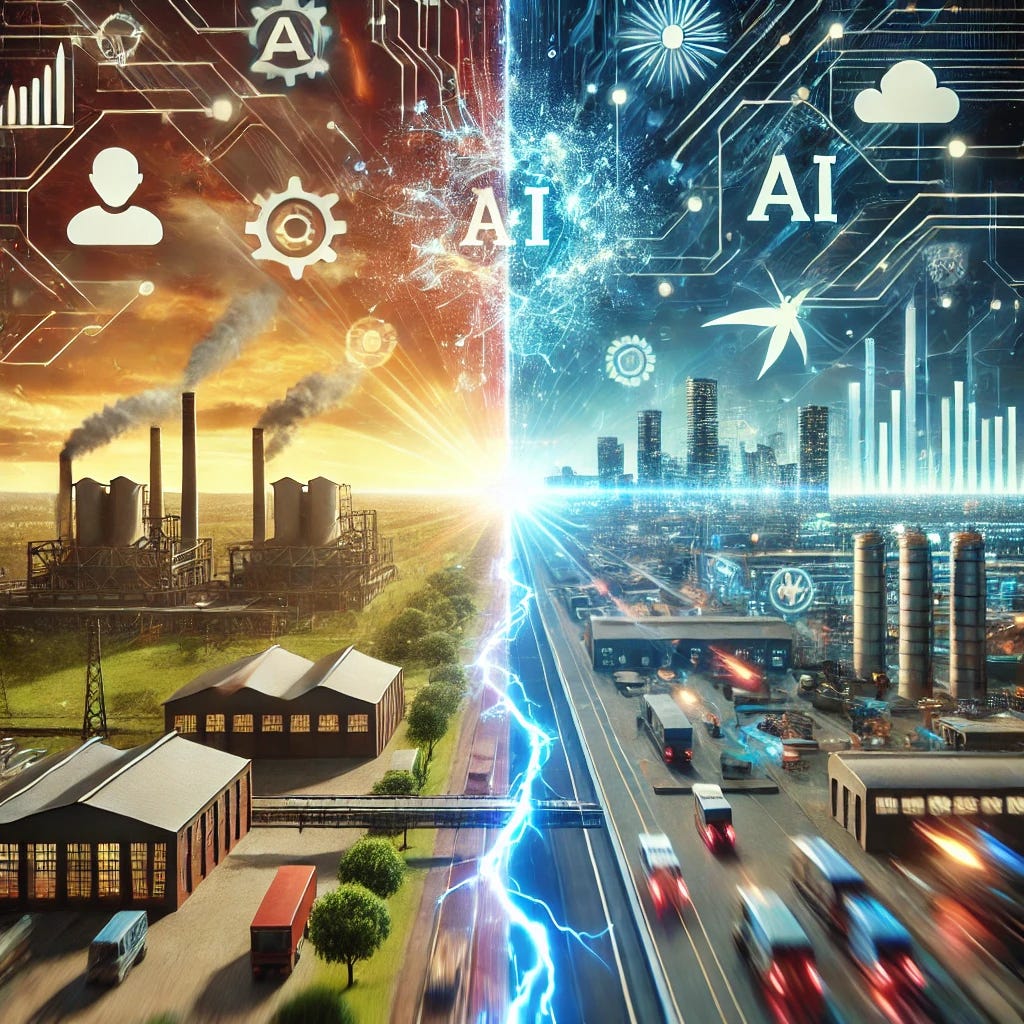AI Hysteresis: Why the Shift to a Post-AI World Will Be Sudden, Not Gradual
There’s a fascinating trick you can do with a bottle of water. If you let it cool in the freezer but remove it just before it freezes, the water stays in a liquid state even though it’s below freezing temperature. Then, with a simple tap or by adding a small piece of ice, the entire bottle rapidly solidifies before your eyes. This is a physical phenomenon called hysteresis, where a system can linger in one state even when all the conditions are ripe for change—until a small nudge triggers a sudden transformation. It’s amazing to watch how the beautifully structured ice crystal emerges from the random behavior that is a liquid so quickly.
Now, consider how this same concept might apply to the current industrial revolution we are experiencing, one driven by the rapid evolution of artificial intelligence (AI). We're moving from a pre-AI world to a post-AI one, but if we follow the logic of hysteresis, the shift will not be gradual—it will be sudden. Let me explain.
The Pre-AI World: Everything in Place, Yet Stuck
AI is evolving at an extraordinary pace. Every week, new models are released, and what we thought were cutting-edge capabilities become yesterday's news. Even experts in the field struggle to keep up with the relentless wave of innovation. But despite this rapid technological advancement, the broader world is still largely operating in a pre-AI state. Businesses, governments, and societies continue to function within the frameworks of the old industrial age, hesitant or unprepared to fully embrace the potential of AI. People will shy away from AI use for numerous reasons, such as fear of the learning curve of using it, fear of what it might do wrong, or even social stigma of “cheating” by using AI. It will feel it’s too early even when it’s not, or doesn’t have to be.
Think of this as the “supercooled water” phase. The conditions for a post-AI world—advanced technologies, infrastructure, and even societal needs—are all here, but we are still behaving like we’re in the past. Most industries are holding on to legacy processes, wary of what full AI integration might entail. It’s not that we lack the tools; it’s that we haven’t yet been nudged into the next phase.
What Will Trigger the AI “Solidification”?
In physical systems, a small catalyst—like a piece of ice—can trigger a phase transition. For AI, that catalyst could take many forms: a breakthrough in AI capabilities, a regulatory or policy shift that incentivizes AI integration, or perhaps a cultural tipping point where businesses and individuals fully embrace the benefits of AI. It might be an economic necessity that forces organizations to adopt AI en masse, or even a geopolitical event that changes the priorities of entire nations.
But one thing is clear: once the tipping point is reached, the transition will be swift. The conditions are already set. All it will take is the right nudge, and suddenly, AI will be everywhere. Like the water freezing in an instant, we’ll go from isolated AI use cases to an economy and society that are fundamentally restructured around AI technologies.
The Domino Effect: Nucleating Post-AI Behavior
Once the transition begins, we’ll see a rapid cascade of changes. In the same way that solid molecules nucleate more solid molecules around them, early adopters of AI—those industries or regions that figure out how to fully integrate AI into their operations—will spur others to follow suit. The result? A brief period of intense change, where industries across the board restructure, new business models emerge, and AI becomes as ubiquitous as electricity was during the second industrial revolution.
What we should be watching for, then, are these early nuclei of post-AI behavior. Who is experimenting with new AI-driven processes? Which industries are beginning to pivot away from traditional models in favor of AI-centric ones? These will be the signs that the broader transition is imminent.
Accelerating the Shift
There’s an opportunity here for those who are paying attention. By identifying and supporting these nuclei of post-AI behavior, we can actively accelerate the transition to a post-AI world. Governments can create policies that encourage AI integration, businesses can invest in AI capabilities that position them at the forefront of this shift, and individuals can upskill to prepare themselves for the demands of an AI-driven future.
In the end, the transition to a post-AI world won’t happen gradually over decades—it will happen suddenly. And those who understand the dynamics of hysteresis will be best positioned to thrive in this new industrial age.




